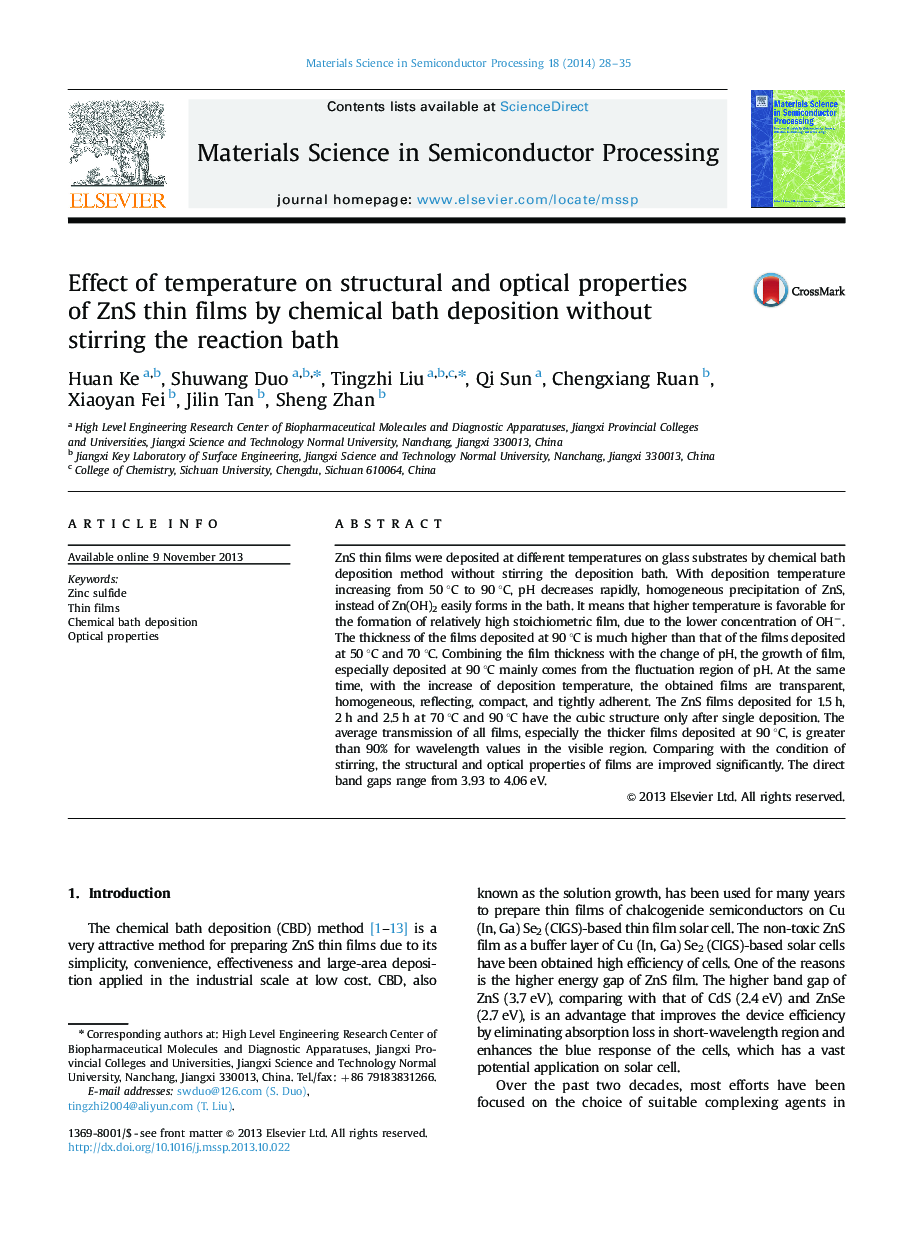| Article ID | Journal | Published Year | Pages | File Type |
|---|---|---|---|---|
| 729452 | Materials Science in Semiconductor Processing | 2014 | 8 Pages |
ZnS thin films were deposited at different temperatures on glass substrates by chemical bath deposition method without stirring the deposition bath. With deposition temperature increasing from 50 °C to 90 °C, pH decreases rapidly, homogeneous precipitation of ZnS, instead of Zn(OH)2 easily forms in the bath. It means that higher temperature is favorable for the formation of relatively high stoichiometric film, due to the lower concentration of OH−. The thickness of the films deposited at 90 °C is much higher than that of the films deposited at 50 °C and 70 °C. Combining the film thickness with the change of pH, the growth of film, especially deposited at 90 °C mainly comes from the fluctuation region of pH. At the same time, with the increase of deposition temperature, the obtained films are transparent, homogeneous, reflecting, compact, and tightly adherent. The ZnS films deposited for 1.5 h, 2 h and 2.5 h at 70 °C and 90 °C have the cubic structure only after single deposition. The average transmission of all films, especially the thicker films deposited at 90 °C, is greater than 90% for wavelength values in the visible region. Comparing with the condition of stirring, the structural and optical properties of films are improved significantly. The direct band gaps range from 3.93 to 4.06 eV.
